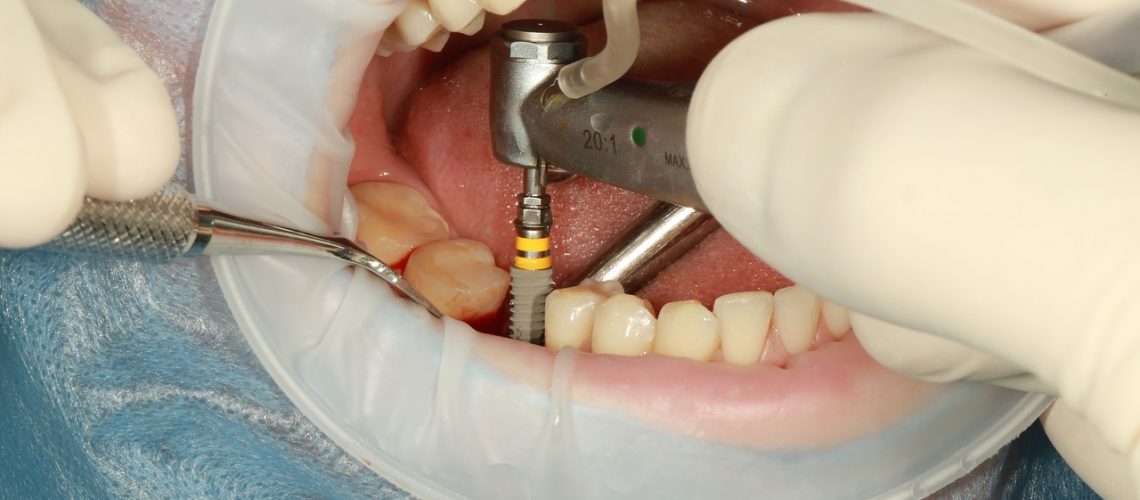Getting The Dental Sense To Work
Getting The Dental Sense To Work
Blog Article
The 30-Second Trick For Dental Sense
Table of ContentsSome Known Details About Dental Sense A Biased View of Dental SenseEverything about Dental SenseMore About Dental Sense
are clinical devices operatively implanted right into the jaw to restore a person's capability to eat or their appearance. They supply support for artificial (fake) teeth, such as crowns, bridges, or dentures. When a tooth is shed as a result of injury or disease, an individual can experience issues such as rapid bone loss, faulty speech, or adjustments to eating patterns that lead to pain.Dental dental implant systems include a dental implant body and oral implant joint and may likewise include a joint addiction screw. Cosmetic dentistry services. The dental implant body is surgically placed in the jawbone in place of the tooth's root. The dental implant abutment is normally connected to the implant body by the abutment fixation screw and extends with periodontals into the mouth to support the affixed artificial teeth
(https://www.openlearning.com/u/matthewmusic-spvoez/about/)Structure of The Dental Implant System selecting dental implants, talk to your oral company concerning the possible advantages and dangers, and whether you are a candidate for the treatment. Points to take into consideration: Your general health and wellness is a vital consider determining whether you are a great prospect for dental implants, exactly how long it will require to recover, and for how long the dental implant might remain in location.
Smoking may influence the recovery process and reduce the long-term success of the implant. The healing process for the dental implant body might take several months or longer, throughout which time you typically have a short-lived abutment instead of the tooth. the oral implant procedure: Meticulously adhere to the dental hygiene guidelines provided to you by your oral supplier.
Indicators on Dental Sense You Should Know
Implant failure can lead to the demand for an additional procedure to deal with or change the implant system. Restores the capacity to chew Recovers aesthetic appearance Helps maintain the jawbone from diminishing due to bone loss Maintains the wellness of the surrounding bone and gums Assists keep adjacent (close-by) teeth stable Improves lifestyle Damage to bordering all-natural teeth throughout dental implant placement Injury to the surrounding cells during surgery, such as sinus opening Injury during surgical treatment (for example, fracture of surrounding jawbone) Inadequate function, such as seeming like the teeth do not attack together generally An experience that the tooth is loose or turning in area resulting from a joint screw loosening up Implant body failure (looseness of the implant body) as a result of systemic infection, which might be more most likely in clients with unrestrained diabetes due to local infection in bone and periodontals sustaining the implant body because of postponed recovery, which may be most likely in clients that smoke Problem cleansing the gums around the dental implant, resulting in bad oral hygiene Neglected gum illness Post-surgical pins and needles due to nerve impingement or damage Always notify wellness care carriers and imaging specialists that you have dental implants before any type of magnetic vibration imaging (MRI) or x-ray treatments.
FDA is not mindful of any type of damaging occasions reported for MRI or x-ray treatments with oral implants. Dental implants systems are normally constructed from materials that adhere to global agreement requirements of the International Organization for Standardization (ISO) or ASTM International. These standards check my site have information of what makes a secure product.

An oral implant is a structure that changes a missing out on tooth. With screw-like devices, the surgeon inserts an implant right into the jawbone, and it acts as a support for a synthetic tooth, called a crown.
Dental Sense for Beginners
Some individuals are not eligible for oral implant surgery. It is for dental specialists to operate people with: intense illnessuncontrollable metabolic diseasebone or soft cells illness or infectionIf these problems are resolved, a person can have the surgery. In, oral specialists avoid from running on people with: If individuals with any of the above go through oral implant surgical procedure, there is a higher threat of the dental implant stopping working.

Dental dental implant surgical procedure is a personalized procedure. It's not the same for everyone. But the following offers a basic summary of what you can expect your dental practitioner, dental surgeon, periodontist or prosthodontist to do: Position the implant operatively. Offer you time to heal. Affix the post and last crown, bridge or denture.
Next off, your doctor will carefully put the dental implant right into your jaw. Lastly, your surgeon will certainly rearrange your gum tissues and shut the cut with stitches. If your implant is near the front of your mouth, your dentist will certainly make a temporary tooth for you to use till you recover. That way, you will not have a space in your smile while you recoup.
The Definitive Guide for Dental Sense
Your service provider can tell you what to expect in your circumstance. During the recovery stage, your jawbone should fuse to the dental implant. This procedure, called osseointegration, is crucial for security and lasting success. This process can take anywhere from three to 9 months. In many cases, it might take longer.
As soon as your implant heals, your dental practitioner can attach the joint (tiny port post) and your final remediation (crown, bridge or denture). This usually takes regarding one hour to complete and may call for a 2nd minor surgical treatment. You shouldn't really feel any discomfort throughout your dental implant treatment due to the fact that your company will utilize drug to numb your gum tissues.
Report this page